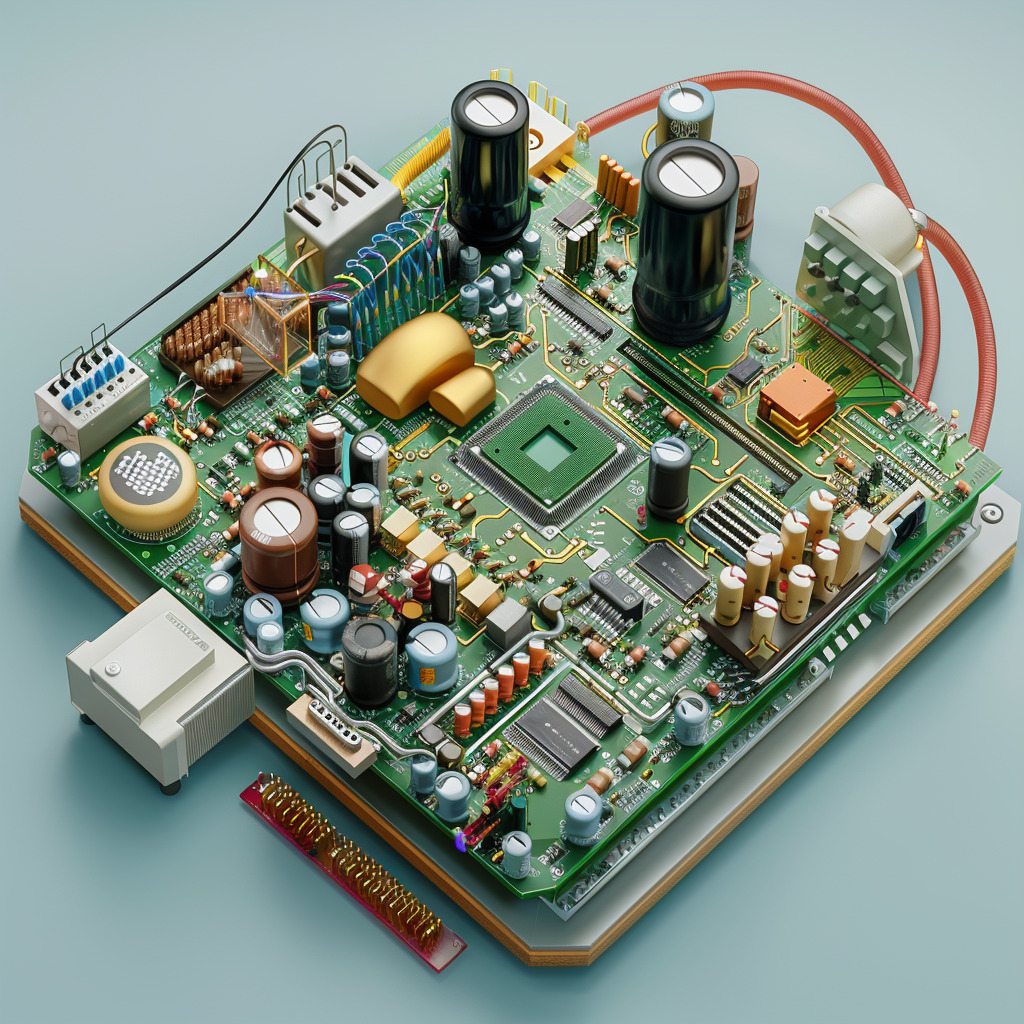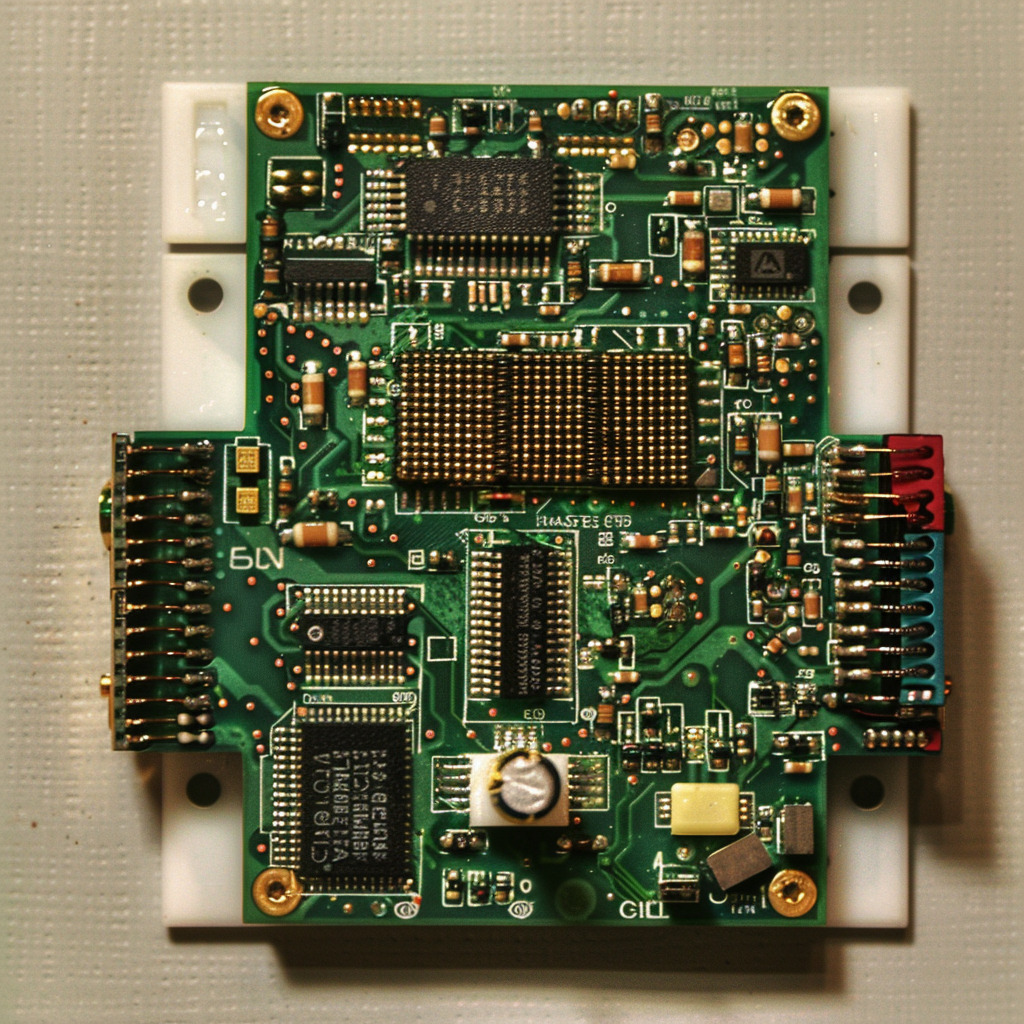
Microcontrollers are small, self-contained computers that are designed to perform specific tasks. They are essentially integrated circuits that combine a microprocessor, memory, and input/output peripherals into a single package. These compact devices are widely used in numerous electronic systems and devices, ranging from household appliances and automotive systems to industrial machinery and medical devices.
The main purpose of a microcontroller is to control and monitor the operation of a system or device. They are programmed to execute specific instructions and respond to various inputs and outputs. Microcontrollers typically have a dedicated program memory where the instructions are stored, as well as random access memory (RAM) for temporary data storage.
Microcontrollers are known for their versatility, low cost, and low power consumption. They are designed to operate in real-time and can interact with sensors, actuators, and other electronic components. They can process data, make decisions, and perform actions based on the input they receive and the program they are running.
Microcontrollers come in different varieties, with varying processing power, memory capacity, and input/output capabilities. They may support different communication protocols, such as UART, SPI, I2C, and USB, enabling them to interface with other devices and systems. Some microcontrollers also have built-in analog-to-digital converters (ADCs) and pulse-width modulation (PWM) outputs, which are useful for tasks involving analog signals and control of motors and actuators.
Programming microcontrollers traditionally involved writing low-level code in assembly language or using specialized languages like C or C++. However, there are now higher-level programming environments and development tools available that make it easier for beginners and non-experts to work with microcontrollers.
The applications of microcontrollers are vast and diverse. They are used in home automation systems, wearable devices, robotics, embedded systems, Internet of Things (IoT) devices, and more. Due to their small size, low power consumption, and cost-effectiveness, microcontrollers have become an integral part of modern electronic design and have revolutionized various industries.

Microcontrollers play a crucial role in various medical devices, contributing to advancements in healthcare and improving patient outcomes. Here are some of the key applications of microcontrollers in the medical field:
1. Implantable Medical Devices: Microcontrollers are used in implantable medical devices such as pacemakers, defibrillators, and neurostimulators. These devices require precise control and monitoring of electrical signals to regulate heart rhythms, deliver therapy, or stimulate nerves. Microcontrollers enable real-time processing of data from sensors, ensuring accurate and timely responses.
2. Diagnostic Equipment: Microcontrollers are found in a wide range of diagnostic equipment, including blood glucose meters, blood pressure monitors, and pulse oximeters. These devices rely on microcontrollers to acquire and process data from sensors, display readings, and provide accurate measurements to healthcare professionals and patients.
3. Infusion Pumps: Microcontrollers are integral to infusion pumps used for administering fluids and medication to patients. They control the flow rate, monitor pressure, and ensure the accurate delivery of fluids. Microcontrollers also enable safety features such as alarms, dose limits, and error detection, enhancing patient safety.
4. Respiratory Devices: Microcontrollers are employed in respiratory devices like ventilators and continuous positive airway pressure (CPAP) machines. They regulate airflow, control pressure levels, and synchronize with patient breathing patterns. Microcontrollers enable precise adjustment of parameters based on patient needs, ensuring optimal respiratory support.
5. Prosthetics and Rehabilitation Devices: Microcontrollers are used in prosthetic limbs and rehabilitation devices to enable precise control and natural movement. They interpret signals from sensors, such as electromyography (EMG) sensors, to control motors and actuators in the prosthetic limbs. Microcontrollers facilitate personalized and intuitive interaction between the user and the device.
6. Monitoring Systems: Microcontrollers are employed in monitoring systems for vital signs, such as electrocardiogram (ECG) monitors, pulse monitors, and sleep apnea monitors. They acquire, process, and transmit data from sensors, providing real-time information to healthcare professionals for diagnosis and treatment decisions.
7. Lab Equipment: Microcontrollers are used in laboratory equipment, such as centrifuges, incubators, and DNA sequencers. They control temperature, speed, and other parameters critical for accurate experimentation and analysis. Microcontrollers enable precise and reliable operation, ensuring reproducible results.
8. Smart Medical Devices: With the advent of the Internet of Things (IoT) in healthcare, microcontrollers are incorporated into smart medical devices that can connect to networks and exchange data. These devices, like smartwatches and fitness trackers, monitor health parameters, track activity levels, and provide real-time feedback to users and healthcare providers.
The use of microcontrollers in medical devices enhances functionality, reliability, and safety. They enable precise control, real-time data processing, and integration with other technologies. As technology advances, microcontrollers continue to drive innovation in the medical field, enabling the development of more sophisticated and effective medical devices.
Microcontrollers offer several advantages when used in medical devices, but they also come with certain limitations. Let's explore the advantages and disadvantages of microcontrollers in medical devices:
1. Precise Control: Microcontrollers provide precise control over various functions in medical devices. They can accurately regulate parameters such as dosage, flow rate, pressure, or timing, ensuring optimal performance and patient safety.
2. Real-time Processing: Microcontrollers enable real-time processing of data from sensors, allowing immediate responses and adjustments based on patient needs. This real-time capability is critical in medical devices where timely actions can significantly impact patient outcomes.
3. Compact Size: Microcontrollers are compact and can be integrated into small medical devices or embedded within implants. Their small size allows for miniaturization of devices, making them more portable and less invasive for patients.
4. Low Power Consumption: Medical devices often need to operate on limited power sources, such as batteries. Microcontrollers are designed to be energy-efficient, consuming minimal power while maintaining functionality. This feature helps extend the battery life of portable devices and reduces the need for frequent replacements.
5. Cost-effectiveness: Microcontrollers are cost-effective compared to other computing solutions. Their integration of multiple functions into a single chip reduces the overall complexity and cost of a device. This affordability makes medical devices more accessible to healthcare providers and patients.
1. Limited Processing Power: Microcontrollers have limited processing power compared to more powerful computing platforms. This limitation can be a challenge when dealing with complex algorithms, large data sets, or sophisticated image processing tasks. Some advanced medical applications may require more powerful processors.
2. Limited Memory: Microcontrollers typically have limited memory capacity for storing programs and data. This limitation can restrict the complexity and size of software applications running on the device. It may require careful optimization of code and data management to fit within the available memory constraints.
3. Programming Complexity: Programming microcontrollers often requires low-level languages like C or assembly language. This can be challenging for developers who are not familiar with embedded systems programming. However, the availability of higher-level development tools and environments has made programming microcontrollers more accessible to a broader range of developers.
4. Hardware Limitations: Microcontrollers have fixed hardware configurations and limited input/output options. While they can interface with a variety of sensors and actuators, they may not support all the desired functionalities or communication protocols required for specific medical applications. This limitation may necessitate additional components or custom solutions.
5. Limited Upgradability: Microcontrollers are typically designed for specific applications and have limited upgradability options. Once integrated into a medical device, upgrading the microcontroller hardware or firmware may require significant modifications or even replacement of the entire device.
Despite these limitations, microcontrollers continue to be widely used in various medical devices due to their reliability, cost-effectiveness, and real-time processing capabilities. The ongoing advancements in microcontroller technology are addressing some of these limitations, providing more powerful and versatile solutions for medical applications.

The future trends of microcontroller applications in medical devices are promising, as advancements in technology and healthcare continue to drive innovation. Here are some key areas where microcontrollers are expected to play a significant role:
1. Internet of Medical Things (IoMT): The integration of microcontrollers with the Internet of Things (IoT) is revolutionizing healthcare. Microcontrollers will enable medical devices to connect and communicate with each other, healthcare providers, and patients, creating a network of interconnected devices. This connectivity will facilitate remote monitoring, data sharing, and real-time analysis, leading to improved patient care and personalized treatments.
2. Artificial Intelligence (AI) and Machine Learning (ML): Microcontrollers will be utilized in medical devices that leverage AI and ML algorithms. These devices will be able to analyze and interpret large amounts of patient data, enabling early detection of diseases, accurate diagnoses, and personalized treatment recommendations. Microcontrollers with enhanced processing power and memory capacity will support complex AI and ML algorithms directly on the device, reducing reliance on external computing resources.
3. Wearable and Implantable Devices: Microcontrollers will continue to be integrated into wearable and implantable medical devices. Wearable devices, such as smartwatches and fitness trackers, will incorporate microcontrollers with advanced sensing capabilities, providing real-time health monitoring and personalized feedback. Implantable devices, such as smart implants and biosensors, will rely on microcontrollers for precise control, data processing, and wireless communication with external devices.
4. Edge Computing: Microcontrollers will play a crucial role in edge computing in healthcare. Edge devices equipped with microcontrollers will process and analyze data locally, reducing latency and dependence on cloud-based processing. This will be particularly beneficial in applications where real-time response and data privacy are critical, such as remote patient monitoring, emergency response systems, and wearable health trackers.
5. Cybersecurity: As medical devices become more connected and vulnerable to cybersecurity threats, microcontrollers will incorporate enhanced security features. Hardware-based security mechanisms, encryption algorithms, and secure communication protocols will be integrated into microcontrollers to protect patient data and ensure the integrity and confidentiality of medical devices and systems.
6. Personalized Medicine: Microcontrollers will contribute to the advancement of personalized medicine. By integrating microcontrollers into medical devices, healthcare professionals will be able to collect and analyze patient-specific data, enabling tailored treatments and therapies. Microcontrollers will ensure accurate data acquisition, processing, and feedback, facilitating the delivery of personalized healthcare solutions.
7. Enhanced User Interfaces: Microcontrollers will enable improved user interfaces in medical devices, enhancing usability and patient experience. Touchscreens, voice recognition, gesture control, and augmented reality interfaces will be integrated with microcontrollers to provide intuitive and interactive interactions between users and medical devices.
8. Data Analytics and Predictive Maintenance: Microcontrollers will support advanced data analytics capabilities within medical devices. By collecting and analyzing data on device usage, performance, and maintenance requirements, microcontrollers will enable predictive maintenance and optimized device performance. This will minimize downtime, improve device reliability, and reduce healthcare costs.
As technology continues to evolve, microcontrollers will play a pivotal role in driving innovation and transforming the landscape of medical devices. With their real-time processing capabilities, connectivity, and versatility, microcontrollers will enable smarter, more efficient, and personalized healthcare solutions.
This website uses cookies. By using this site, you consent to the use of cookies. For more information, please take a look at our Privacy Policy. Got it